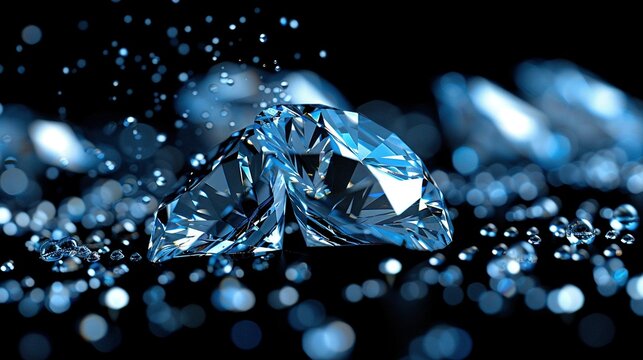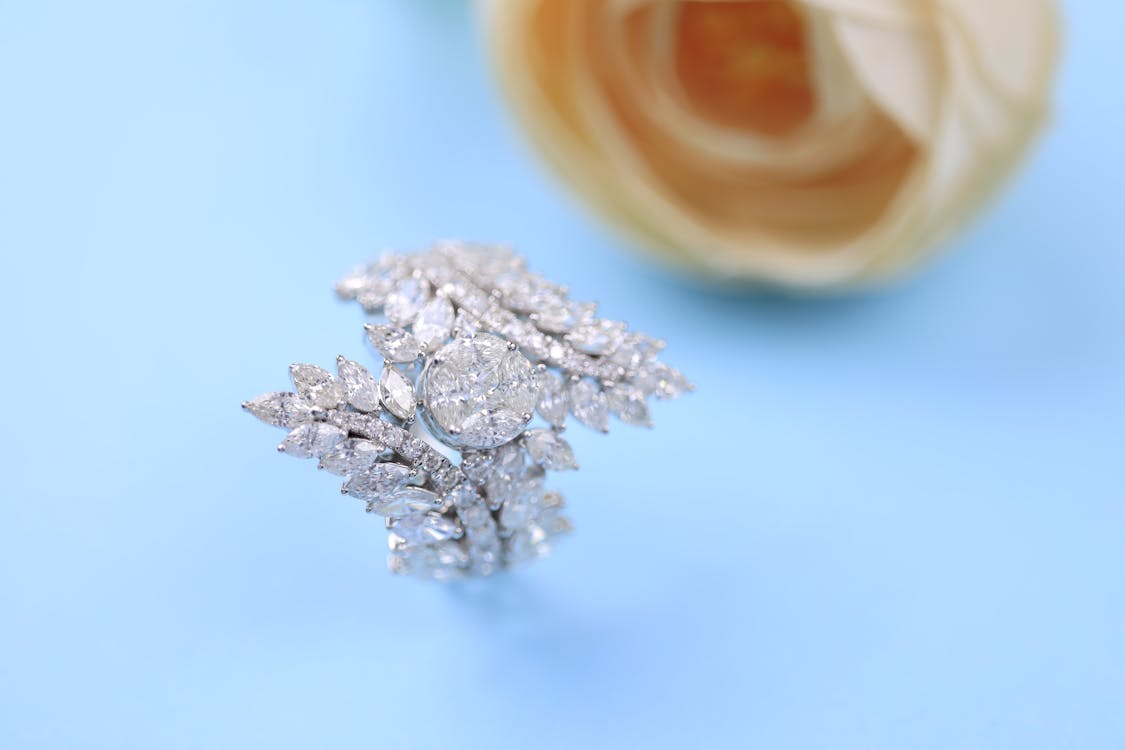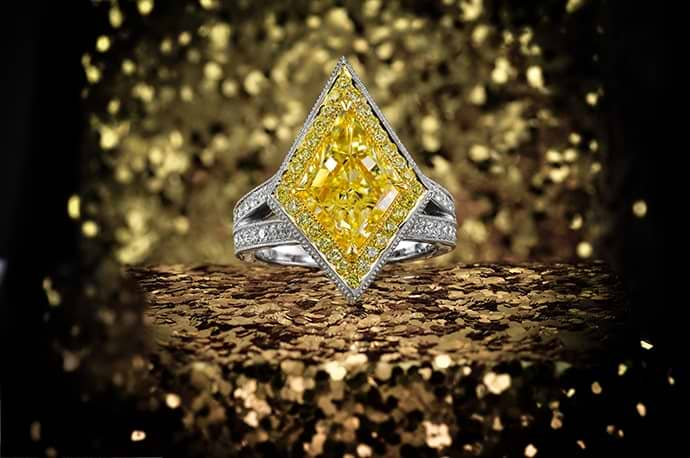
Lab diamond rings have become increasingly popular due to their ethical sourcing, affordability, and stunning beauty. As an essential component of any engagement ring or fine jewelry piece, the claws used to secure a lab diamond are crucial for both aesthetics and durability. Lab diamond rings claws are the settings that hold the diamond in place, ensuring its security while allowing the stone to shine brilliantly. In this article, we will explore the role of claws in lab diamond rings, how they enhance the overall design, and why they are a key element to consider when choosing a ring.
What Are Lab Diamond Rings Claws?
When it comes to lab diamond rings claws, they refer to the small metal prongs or settings used to secure a diamond in place. These prongs are typically made of precious metals like platinum, white gold, yellow gold, or rose gold. The claws are designed to hold the diamond firmly while minimizing metal visibility, ensuring the gemstone remains the focal point of the ring. Lab diamond rings claws are essential for ensuring that the stone stays securely in place, whether for everyday wear or special occasions.
In the case of lab diamond rings claws, the number of prongs used can vary depending on the design. Common settings include four-prong and six-prong options, but other variations are also available. Each setting offers different levels of security and aesthetic appeal. The purpose of the claws is not only to hold the lab diamond in place but also to enhance its overall visual appeal, allowing maximum light to pass through the diamond and showcase its brilliance.
The Role of Lab Diamond Rings Claws in Ring Design
The design of lab diamond rings claws plays an integral role in shaping the overall look of the ring. The number of prongs, the shape of the claws, and the way they are arranged can all impact the ring’s style. For example, a four-prong setting is a classic choice that offers a clean and minimalistic look, while a six-prong setting provides added security and a more traditional appearance. Some rings feature a double claw design for additional support and a unique visual effect.
When choosing lab diamond rings claws, it’s essential to consider how the setting complements the overall style of the ring. A delicate, thin band might pair beautifully with a subtle four-prong setting, while a more elaborate design might benefit from the added security and visual impact of six prongs. Regardless of the setting choice, the claws are designed to allow the diamond to take center stage, creating a captivating look that highlights the stone’s brilliance.
Security and Durability of Lab Diamond Rings Claws
One of the most important factors when choosing lab diamond rings claws is the security and durability they offer. Claws are responsible for keeping the diamond in place, ensuring that it doesn’t become loose or fall out over time. A well-designed claw setting provides the necessary support to protect the diamond from damage, whether it’s from daily wear or accidental bumps.
For those seeking extra security, some ring designs incorporate bezel or channel settings, which fully enclose the diamond. However, many people prefer the open claw design because it allows the maximum amount of light to enter the diamond, increasing its brilliance and sparkle. Regardless of the style chosen, ensuring that the claws are securely fastened is essential to maintaining the diamond’s integrity. Regular maintenance and checks can also help keep the lab diamond rings claws in optimal condition, preventing any potential damage or loosening over time.
The Aesthetic Appeal of Lab Diamond Rings Claws
A key feature of lab diamond rings claws is their ability to highlight the diamond’s natural beauty. The claws are strategically placed to hold the stone without overpowering it, ensuring the diamond remains the focus of the design. The minimalistic yet elegant nature of claw settings allows light to pass through the stone from multiple angles, creating the iconic sparkle that diamonds are known for.
While the primary function of claws is to secure the diamond, they also contribute to the overall aesthetic of the ring. Depending on the design, claws can be crafted in various shapes and sizes, adding to the visual appeal of the ring. Some claw settings are designed to be sleek and discreet, while others may feature more ornate details, creating a more dramatic effect. Whether you prefer a timeless and understated look or a bold and modern design, the claws can be tailored to fit your personal style, making them an essential element in the ring’s design.
The Benefits of Lab Diamond Rings Claws Over Other Settings
When comparing lab diamond rings claws to other types of diamond settings, such as bezel or channel settings, there are several advantages to consider. The most significant benefit of claw settings is the way they allow light to enter the diamond. Because the claws hold the stone above the band, they create more opportunities for light to reflect off the diamond’s facets, enhancing its sparkle and brilliance. This is especially important for lab diamonds, which often have exceptional clarity and brilliance.
Claws also offer flexibility in terms of design. Whether you want a classic, vintage-inspired setting or a modern, minimalist look, lab diamond rings claws can be customized to suit your preferences. Furthermore, claw settings are often easier to adjust than other types of settings, allowing jewelers to resize or modify the ring if needed. This makes them a popular choice for those looking for a versatile and stunning ring design that will stand the test of time.
Choosing the Right Lab Diamond Rings Claws for Your Style
When selecting lab diamond rings claws, it’s important to consider both the security of the diamond and the aesthetic appeal of the setting. Think about the overall design of the ring and how the claws will complement your personal style. Whether you’re drawn to a classic solitaire with a four-prong setting or a more intricate design with six prongs, the key is to choose a setting that highlights the lab diamond while ensuring its safety and durability.
Additionally, the metal type used for the claws plays a significant role in the overall appearance of the ring. Popular metals for lab diamond rings claws include platinum, which is known for its durability and white sheen, and gold, available in various colors such as yellow, white, and rose. Each metal type has its own unique qualities, so it’s essential to consider how the claws’ metal will match the rest of the ring and suit your style preferences.
Conclusion
The claws on lab diamond rings serve a dual purpose of securing the diamond while also enhancing its overall appearance. Whether you choose a four-prong or six-prong setting, the claws are an essential part of the ring’s design, ensuring that the diamond remains secure while showcasing its brilliance. The security, durability, and aesthetic appeal of lab diamond rings claws make them an ideal choice for those seeking a ring that is both beautiful and functional. By understanding the importance of the claws in the design and selection of a lab diamond ring, you can choose a setting that not only suits your personal style but also provides the protection and elegance your diamond deserves.








:max_bytes(150000):strip_icc()/Web_1500-bri-lab-grown-diamonds-test-12fifteen-12f1-jthompson-0636-29ab9d8b5b304e89aade785fc47135a7.jpg)


